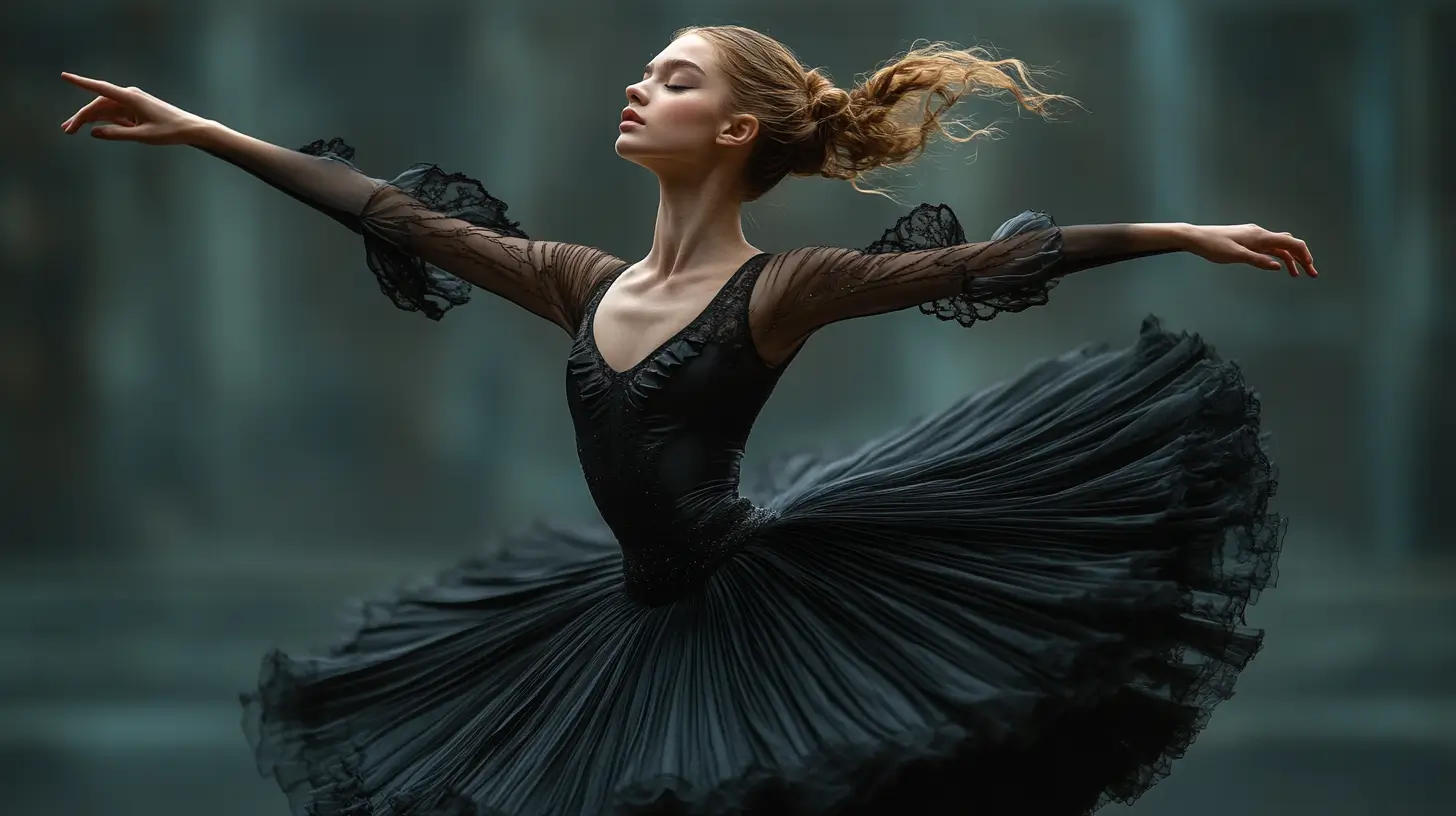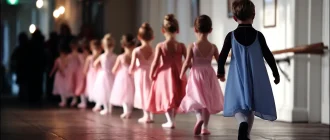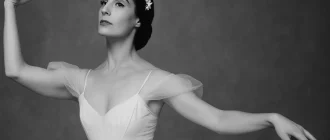Which US ballet companies are the most influential, and what sets their performances apart from those of world-class dancers? This article provides an in-depth look at top American ballets, featuring prominent companies like the American Ballet Theatre and New York City Ballet.
Notably, Benjamin Millepied, the artistic director of the LA Dance Project, previously served as the director of the Paris Opera Ballet. This illustrates how ties to renowned institutions can influence the recognition and standing of other ballet companies. Discover these ballet companies for their rich histories, iconic performances, and unique styles.
Graceful Insights
- American Ballet Theatre (ABT) is America’s National Ballet Company®. It promotes classical and contemporary ballet and is committed to diversity and accessibility.
- The New York City Ballet (NYCB), founded by Balanchine, is known for its innovative choreography. It combines classical techniques with modern elements, highlighting speed and musicality.
- American ballet encompasses a range of classical, neoclassical, and contemporary styles, each contributing to the art form’s evolution and reflecting a rich cultural tapestry.
Art de Podcast
| Rank | Ballet Company | Location | Signature Performances | Notable Contributions | Website |
|---|---|---|---|---|---|
| 1 | American Ballet Theatre (ABT) | New York, NY | Swan Lake, Giselle, The Nutcracker | Renowned for a diverse repertoire blending classical and contemporary works. | abt.org |
| 2 | New York City Ballet (NYCB) | New York, NY | George Balanchine’s The Nutcracker, Serenade, Symphony in C | Pioneered neoclassical ballet under George Balanchine’s direction. | nycballet.com |
| 3 | San Francisco Ballet | San Francisco, CA | Nutcracker, Romeo & Juliet, Don Quixote | Recognized as America’s oldest professional ballet company, it is known for innovative programming. | sfballet.org |
| 4 | Boston Ballet | Boston, MA | Swan Lake, The Sleeping Beauty, La Sylphide | Celebrated for its versatile repertoire and commitment to new works. | bostonballet.org |
| 5 | Houston Ballet | Houston, TX | The Nutcracker, Cinderella, Mayerling | Texas’s largest professional ballet company is noted for its strong classical foundation and contemporary creations. | houstonballet.org |
| 6 | Pacific Northwest Ballet | Seattle, WA | A Midsummer Night’s Dream, Carmina Burana, Jewels | It is acclaimed for its diverse repertoire and educational programs. | pnb.org |
| 7 | Joffrey Ballet | Chicago, IL | The Nutcracker, Anna Karenina, The Times Are Racing | Known for its dynamic performances and commitment to contemporary ballet. | joffrey.org |
| 8 | Miami City Ballet | Miami, FL | Jewels, West Side Story Suite, The Nutcracker | Celebrated for its vibrant performances and repertoire rooted in Balanchine’s style. | miamicityballet.org |
| 9 | Alvin Ailey American Dance Theater | New York, NY | Revelations, Cry, Blues Suite | It fuses modern dance with African American cultural expression and is renowned for its powerful storytelling. | alvinailey.org |
The ranking of these American ballet companies is based on their annual expenditures, as reported in the Dance Data Project®’s 2022 report on the largest US ballet and classically based companies. This financial metric reflects the scale of their operations, including production budgets, company size, and overall influence within the ballet community.
Overview of American Ballet Theatre (ABT)

Founded to present and extend classical dance’s legacy, the American Ballet Theatre (ABT) is America’s National Ballet Company®. Known for its dedication to classical and contemporary ballet, ABT aims to create a global community of art enthusiasts who transcend cultural boundaries.
The Repertory Archive at ABT ensures that the rich history of classical dance is preserved and shared with the widest possible audience. This ballet company’s vast repertoire epitomizes the blend of traditional and modern ballet techniques, drawing audiences into the enchanting world of dance.
ABT’s Artistic Vision
ABT’s artistic vision harmoniously combines classical and contemporary works, reflecting its commitment to creative excellence. Collaborations with prominent choreographers enable ABT to create innovative performances that blend the elegance of traditional ballet with the dynamism of modern dance. This fusion enriches the art form, ensuring each performance is a testament to passionate storytelling and beauty.
Guided by its artistic director, ABT aims to make ballet an accessible and transformative experience for a broad audience.
ABT’s Historical Milestones
Significant milestones mark ABT’s journey. The 1947 Artistic Committee of Ballet Theatre, including Jerome Robbins and Aaron Copland, established its rich repertoire. ABT has consistently aimed to develop and create the finest ballets, a vision that guides its path through the ages.
The 11-nation tour to Asia and the Middle East in 1957 showcased American culture globally, reinforcing its status as a company and a cultural ambassador.
ABT’s Commitment to Diversity
ABT is at the forefront of addressing diversity, equity, and inclusion within the classical dance community. Various programs aim to increase representation and opportunities for underrepresented groups. Collaborations with diverse artists and communities enhance ABT’s inclusivity efforts, promoting a mission emphasizing accessibility to dance for individuals from all backgrounds.
This dedication ensures that ballet’s art and beauty continue to evolve, reflecting America’s rich tapestry of society.
New York City Ballet (NYCB)

Founded in 1948 by George Balanchine and Lincoln Kirstein, the former company of the New York City Ballet (NYCB) is a beacon of modern ballet. Celebrated for its innovative choreography and exceptional dancers, NYCB has carved a unique niche in the ballet world.
The ballet company’s distinctive style, characterized by a blend of classical ballet techniques with contemporary elements, has captivated audiences worldwide. This ballet company exemplifies the dynamic intersection of tradition and innovation, continually pushing the boundaries of the art form.
NYCB’s Signature Style
George Balanchine’s pioneering choreography, emphasizing speed, athleticism, and musicality, defines NYCB’s signature dance style. The Balanchine Method prioritizes fast-paced movements, deep pliés, and a strong stage presence, resulting in performances that are playful and expressive.
This neoclassical approach eliminates elaborate costumes and sets, highlighting the dancers’ lines and musicality. This distinctive style has become synonymous with NYCB and distinguishes it in the world of ballet.
Iconic Performances by NYCB
NYCB’s repertoire includes some of the most iconic performances in ballet history. ‘Serenade,’ the first full-length ballet created by George Balanchine in the US, remains a signature piece that showcases the company’s dynamic storytelling and technical prowess.
Another hallmark of NYCB is The Nutcracker®, a beloved holiday tradition known for its elaborate staging and magical performances. These exceptional performances underscore NYCB’s dedication to innovative choreography and artistic excellence, solidifying its position among the world’s finest ballet companies.
Alvin Ailey American Dance Theater

Since its founding by Alvin Ailey in 1958, the Alvin Ailey American Dance Theater has had a profound impact on the world of modern dance. Known for its diverse repertoire, the company features classic pieces and innovative works from contemporary choreographers. Ailey’s commitment to inclusion and diversity has transformed the dance landscape, making it accessible to a broader audience.
The company’s community and school outreach programs annually impact thousands, fostering a love for dance and the world while nurturing the next generation of dancers through intensive programs at the Ailey School and Ailey II.
Performances at venues like the New York City Center continue to inspire and captivate audiences.
Houston Ballet: A Southern Gem
Houston Ballet, founded in 1969 under the leadership of Nina Popova, has grown into one of America’s premier ballet companies. With over 85 performances annually, the company presents a diverse repertoire that encompasses both classical and contemporary works.
The introduction of live orchestra performances in 1972 marked a significant milestone, enhancing the overall experience for audiences. The Houston Ballet Foundation supports these efforts.
Houston Ballet’s dedication to excellence and innovation has cemented its reputation as a cultural gem among the best ballet companies in the southern United States.
Boston Ballet: Blending Tradition and Innovation

Boston Ballet, founded in 1963, seamlessly blends traditional ballet techniques with innovative modern dance forms. Under the visionary leadership of E. Virginia Williams, the company, aimed to provide ballet training that rivaled leading European institutions.
The Boston Ballet’s repertoire features timeless classics, such as Swan Lake, alongside contemporary works by renowned choreographers like William Forsythe. Through its extensive training programs at the Boston Ballet School, the company nurtures over 5,000 students, ensuring that the future of dance remains bright and vibrant.
The Joffrey Ballet: Chicago’s Pride
Established in 1956, the Joffrey Ballet is recognized as Chicago’s resident ballet company. Known for its innovative performances, the Joffrey Ballet was among the first to integrate multimedia elements into its productions, as seen in Astarte.
The Joffrey Ballet Academy is recognized as a vital training ground for aspiring dancers, bridging the gap between education and professional performance. This commitment to innovation and education has cemented the Joffrey Ballet’s recognized status as one of America’s leading dance companies.
Pacific Northwest Ballet: Seattle’s Jewel
Founded in 1972, Pacific Northwest Ballet (PNB) is celebrated for its impressive repertoire, including contemporary and classical works. The company’s performances range from innovative mixed-bill programs to full-length ballets, offering audiences a diverse and enriching experience.
PNB’s dedication to artistic excellence and dynamic approach to ballet make it a jewel in Seattle’s cultural crown.
San Francisco Ballet: A Legacy of Excellence
San Francisco Ballet, established in 1933, has a rich history of groundbreaking choreography and prestigious performances. In the 1940s, under the leadership of William Christensen, the ballet company staged the first complete American productions of classical ballets, including Coppélia, Swan Lake, and The Nutcracker. These historical milestones have solidified San Francisco Ballet’s reputation as a prestigious institution in the ballet world.
The company’s vast and diverse repertoire inspires and captivates audiences, showcasing its historical significance and past and present contemporary relevance.
Regional Ballet Companies: Hidden Gems Across America
While the spotlight often shines on major ballet companies like the American Ballet Theatre and the New York City Ballet, regional ballet companies across America enrich the cultural landscape. These hidden ballet gems provide a platform for local talent and bring world-class performances to otherwise overlooked communities.
Different Styles of Ballet in America

American ballet is a rich tapestry of styles, each contributing to the evolution of the art form. From the structured techniques of classical ballet to the innovative and expressive nature of contemporary ballet, American ballet companies have embraced a diverse range of styles. This diversity is showcased in the repertoires of leading ballet companies, such as the New York City Ballet (NYCB) and American Ballet Theatre (ABT), which feature both traditional and modern influences.
Appreciating these styles enhances our understanding of ballet’s artistic and cultural significance.
Classical Ballet
Classical ballet, emphasizing structured techniques, narrative, and elaborate costumes, remains a cornerstone of the ballet world. The Cecchetti Method, employed by many ballet schools, emphasizes proper body alignment and musicality, helping dancers develop a strong anatomical foundation.
This method’s progressive training stages prepare dancers for performance, maintaining the art form’s traditional elegance and discipline.
Neoclassical Ballet
Neoclassical ballet, pioneered by George Balanchine, focuses on movement over narrative, emphasizing speed, athleticism, and the artistry of the dancer’s lines. This ballet style combines classical ballet techniques with contemporary elements, resulting in dynamic and expressive performances.
The Balanchine Method, characterized by its fast-paced choreography and musicality, is a hallmark of this style. It offers a fresh and engaging perspective on ballet.
Contemporary Ballet
Contemporary ballet pushes the boundaries of traditional ballet, incorporating diverse influences and innovative choreography. Under the direction of Peter Boal, Pacific Northwest Ballet has continued to innovate its repertory, offering new interpretations of classical ballets and introducing audiences to modern works.
This style’s versatility and creativity make it an exciting and ever-evolving aspect of the ballet world.
Best Products for US Ballet Dancers
| Product | Rating (reviews) | Short description |
|---|---|---|
| American Ballet Theatre: A History (DVD) | 4.5 ★ (176) | Ric Burns’ documentary traces ABT’s 75‑year journey with rare rehearsal footage and interviews. |
| Choreography by George Balanchine: A Catalogue of Works | 5.0 ★ (3) | A meticulously illustrated reference covering every Balanchine ballet, rehearsal notes, and premiere data. |
| Alvin Ailey American Dance Theater (DVD) | 4.4 ★ (98) | Captures seminal pieces such as “Revelations” and “Cry,” showcasing the company’s athletic, gospel-infused style. |
| Mendelssohn – A Midsummer Night’s Dream | 4.3 ★ (38) | Balanchine’s full-length production, performed by PNB, filmed in HD with Opus Arte’s crisp staging. |
Learning Ballet: Techniques and Methods
Aspiring dancers in the United States have access to various training techniques that help develop their skills and artistry. From the Cecchetti Method’s systematic approach to the Balanchine Method’s unique characteristics, these techniques provide a comprehensive foundation for ballet training.
Each method offers a distinct approach to developing a dancer’s technical proficiency and artistic expression, ensuring that the next generation of dancers continues to uphold the standards of excellence in ballet.
The Cecchetti Method
The Cecchetti Method emphasizes a structured training system incorporating anatomical awareness to promote healthy dance practices. Its eight rigorous training stages focus on intensive repetition and discipline, ensuring that dancers develop a strong foundation in classical ballet technique.
The emphasis on proper alignment and form prepares dancers for a successful career in ballet, maintaining the art form’s traditional elegance and discipline.
The Balanchine Method
The Balanchine Method, characterized by its emphasis on open arabesques and deep pliés, reflects a distinct neoclassical ballet style. This method prioritizes speed, expressiveness, and musicality, encouraging dancers to interpret music dynamically and engagingly.
The Balanchine Method’s unique approach to choreography and movement has become a defining feature of American ballet, influencing generations of dancers and choreographers.
The Vaganova Technique
The Vaganova Technique emphasizes the coordination of arm and leg movements, which are essential for achieving ballet’s characteristic balance and elegance. This rigorous ballet training method also focuses on syncing upper and lower body movements and building endurance and strength through extended rehearsals.
The Vaganova Technique’s comprehensive approach to training ensures that dancers develop the physical stamina and flexibility necessary for extended performances, thereby enhancing their overall technique and artistry.
Finding the Right Ballet Class
Choosing the right ballet class is important for both beginners and experienced dancers. Begin by identifying your goals for professional training or a fitness routine. Choose a dance style that resonates with your personality and lifestyle, as this can enhance your enjoyment and commitment to the class.
Review class descriptions to ensure they match your skill level and check availability to accommodate your schedule. Many studios offer trial classes, an excellent opportunity to find a class that suits your preferences and needs.
Resume
American ballet is a vibrant and dynamic art form enriched by the contributions of leading dance companies like ABT, NYCB, Alvin Ailey American Dance Theater, and more. These institutions blend tradition with innovation, creating performances that captivate and inspire.
They are committed to artistic excellence, diversity, and community outreach, ensuring ballet remains accessible and relevant. Whether you’re an aspiring dancer or a ballet enthusiast, exploring these companies and their unique styles offers a deeper appreciation of this timeless art form. Ballet in America continues to flourish, promising a future brimming with creativity and passion.











